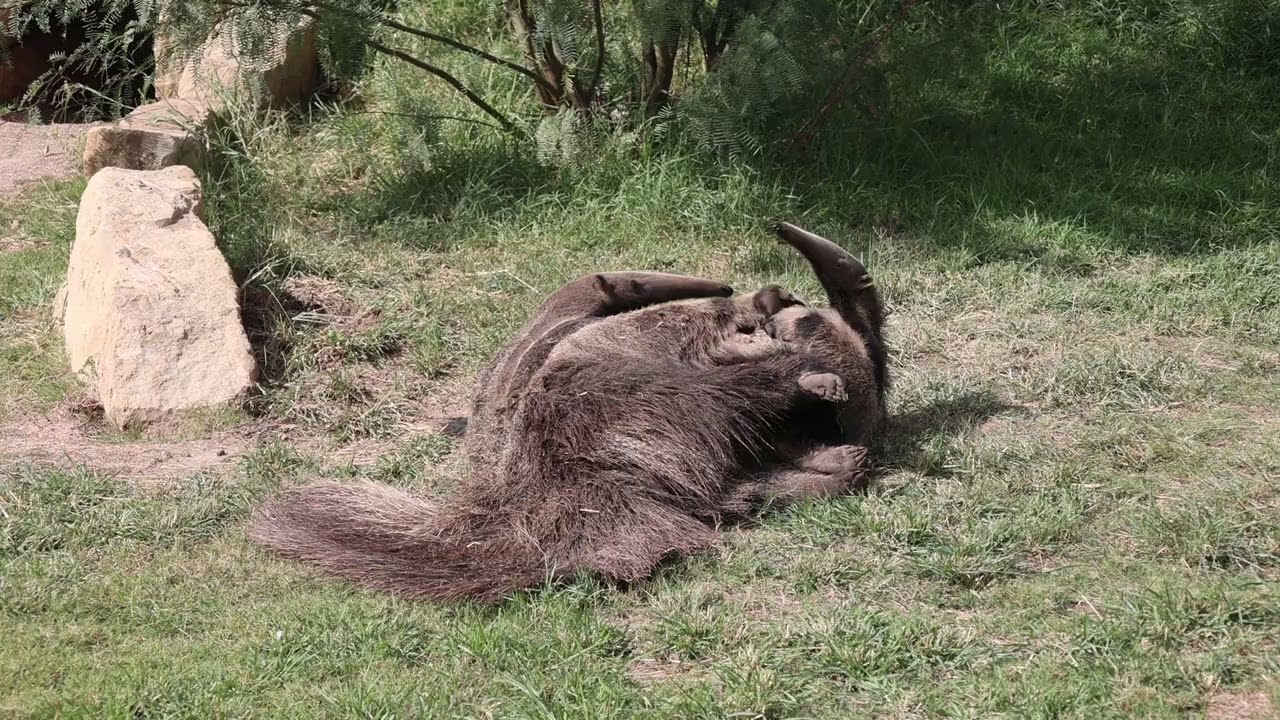Summary:
1. Introduction to Giant Anteaters
2. Baby Giant Anteater: Arnaud
3. Importance of Play for Young Anteaters
4. Mother-Daughter Anteater Wrestling: A Common Sight
5. The Future of Giant Anteaters
Introduction
It is fascinating to watch animals play, especially those we don’t encounter often. For the Giant Anteaters, their playtime is essential for their development, and it is no different with their young, such as five-month-old Arnaud, who wrestles with his mother, Demo. In this article, we will delve into the intricacies of these magnificent creatures, their unique nature, and why playtime is essential for their growth.
Giant Anteaters
Giant Anteaters are unique creatures that belong to the family of Myrmecophagidae. They are native to Central and South America and usually inhabit grasslands, savannas, and forests. With their long, narrow snouts and sticky, worm-like tongues, they are well adapted for consuming ant and termite mounds. Interestingly, Giant Anteaters have no teeth and only 10 vertebrae in their spine, making them entirely unique among mammals.
Baby Giant Anteater: Arnaud
Arnaud is a five-month-old Giant Anteater in captivity with his mother, Demo. Like most young animals, playtime is crucial in developing young Giant Anteaters, as it helps them learn critical survival skills. They learn to hunt, climb, balance, and interact with their peers and family.
Importance of Play for Young Anteaters
Play is crucial for the physical, social, and cognitive development of young Giant Anteaters. It allows them to explore their environment, engage in physical activities, and learn about their surroundings. Through play, they develop fundamental skills such as agility, coordination, and balance, which are essential for survival in the wild.
Mother-Daughter Anteater Wrestling: A Common Sight
Mother-Daughter wrestling is a common sight among Giant Anteaters. It is a sign of affection and a way for them to bond with their young ones. Young Anteaters learn how to use their strength, balance, and agility through play wrestling and develop their hunting skills. It is also a way for them to establish a social hierarchy within their family group. The mother is dominant, while the young Anteaters usually submit to her.
The Future of Giant Anteaters
Sadly, Giant Anteaters face extinction threats due to habitat loss and poaching. These creatures are essential to the ecosystem, and their loss would have devastating effects. We must take steps to protect their habitats and promote conservation efforts to ensure the survival of these magnificent creatures.
Conclusion
In conclusion, Giant Anteaters are unique creatures that play an essential role in the ecosystem, and their young ones, like Arnaud, are no different. Through play, they develop essential skills that prepare them for life in the wild. We must protect their habitats and promote conservation efforts to ensure their survival for generations. With continued effort, we can help preserve these magnificent creatures and learn from them all that nature has to offer.
*****
Source Description
Arnaud, our five-month-old giant anteater, wrestles with his mother, Demo. This kind of play is essential for the development of a young anteater.

